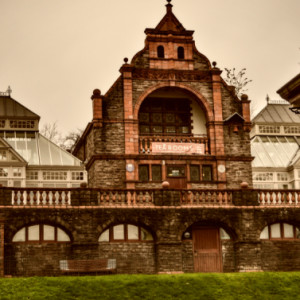The Pavilion
The Pavilion and conservatories at Bellevue Park.
The main one is as it could of looked like when it was built in the 19th century in sepia in the extra photo section it is in colour.
A 19th century public park designed by Thomas Mawson, with 35 acres of ornamental trees, walks, lawns, and water features.
History
In 1891 Lord Tredegar gave land to provide a public park for Newport residents. The city government held a public competition for a design, and the winner was Thomas Mawson of Windermere. Curiously, Mawson misread the competition directions when visiting Newport, and designed his park for the neighbouring parcel of land! It was only after construction had begun that Mawson realised his error and had to quickly redesign ome of his park features.
The park was Mawson's first major project, but he went on to a long career as one of the most influential and successful landscape garden designers of the late Victorian period. Among his other major projects are gardens at Holker Hall, Rydal Hall (both in Cumbria) and Dyffryn Botanic Garden outside Cardiff.
In many ways Belle Vue is typical of a Victorian public park, with ornamental and recreational features including conservatories, a pavilion, a bandstand, and rock garden. There are a series of cascades, large ferns, and footbridges over a stream.
Look for the Gorsedd Stone Circle, added in 1896 for the National Eisteddfod the following year. There are a large number of rare specimen trees, including Himalayan Magnolias, Judas Trees, and Tulip Trees, producing colourful blossoms in the height of summer. Ginko Bilobas and Liquidambar give rich colours in the Autumn months.


Comments
Sign in or get an account to comment.


